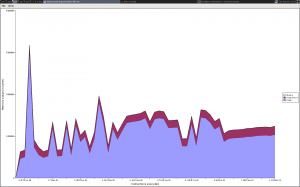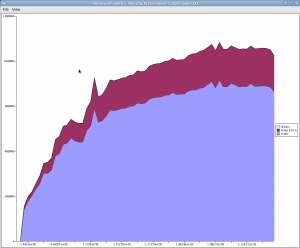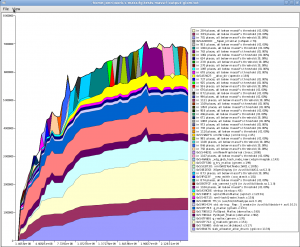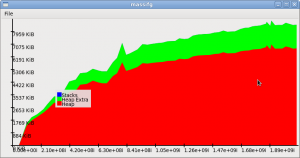This weekend I attended Libre Graphics Meeting in Brussels, and got to meet a bunch of great people from lots of different projects. Got to meet people working on similar things (at least in the same ballpark) as MyPaint, like Krita, GIMP and Nathive. Also got to meet and hang out with some of the awesome people on the Durian Open Movie project. They were using, and were more fond of, MyPaint than I thought. Also chatted with several other users, some of which were using MyPaint as a part of their workflow in a professional environment. Good stuff.
The entire conference was very professionally executed, no technical or organizational problems, yet they were able to maintain a nice cosy atmosphere. The only thing I didn’t quite like was the food, but thats mostly a matter of personal preference (they only served vegetarian, and I’m a quite dedicated carnivore).
There were plenty of good talks, and if you’re interested in them you should check out the video recordings done by River Valleys. I also attended some workshop/BoF sessions, here is my take on them:
OpenRaster BoF
The OpenRaster BoF turned out to be quite different from what I expected. I expected only a couple of people from Krita, GIMP and MyPaint to show up. But no, we had lots of people attending, even professional standards people from Adobe, w3c and Opera! I also somewhat suprised myself (ok, I know that I like to talk and am not afraid to do so, but still), by taking an active role. We did get useful things done, like consensus on that we want to define a minimal baseline standard, and to have fallbacks for things extending upon the baseline. The concrete specs have not been settled, but hopefully we (MyPaint+Krita people mainly) can take care of that pretty soon.
I hope to try out some implementation ideas for fallbacks soon, and to improve the GIMP implementation, but school is keeping me very busy now a days. In fact, the first evening in Brussels was spent finishing my bachelors thesis report, and sunday was spent on my final report in my english class. And its far from over yet…
A Libre Graphics Foundation?
There was a birds-of-a-feather session for a potential “foundation” to support and promote libre graphics projects. Apparently these ideas have come up before, but this year it seems to be gathering some traction so it might actually happen. Different people have different views on what exactly it should be about of course; some are looking in the direction of Blender Foundation/Institute, doing open projects, funding developers, and having official teaching; others are more interested in having common documentation about libre graphics software for users. In any case, a common resource and face for libre graphics projects would be good. But in the end it will boil down to what people step up and make happen, I suspect. Discussions are ongoing on the create @ freedesktop.org mailinglist, so jump in if this tickles your fancies.
LGM2011
In the discussion during the last day, Montreal and Vietnam were proposed as locations for the next LGM. I’d love to go either way, haven’t been to Asia nor North-America. Perhaps even do a talk of my own? Still, it’s much further away, so it might require a very interesting program, depending what I’m doing at that time and how busy I am. We’ll see. If if turns out to be more of an end-user conference, and less of a developer/contributor meeting I’d love to have David Revoy and/or Ramon Miranda do MyPaint workshops. That would be beyond awesome.
In the meantime, it looks like GUADEC will be my next conference, only 8 weeks away. I’m already excited!




